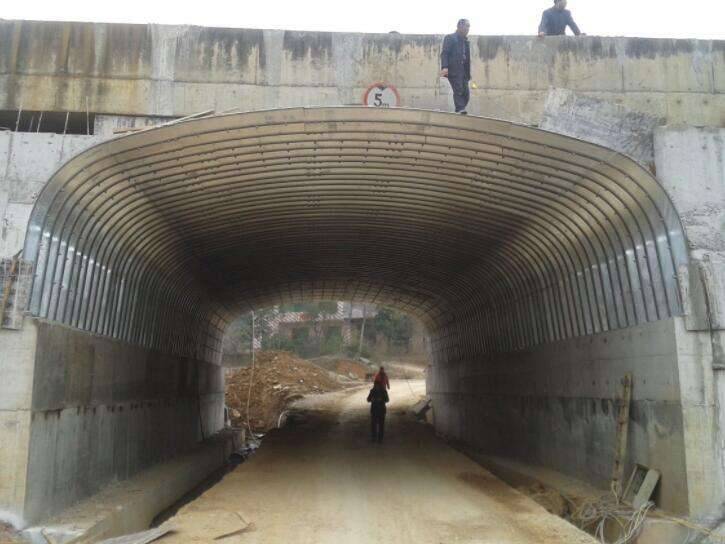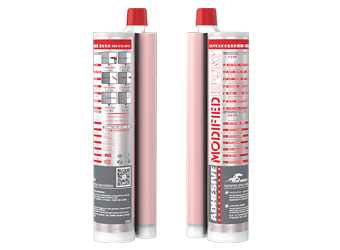Solutions
Horse Construction offers full range of structural strengthening materials with technical supports, documentation supports, products supports, project supports.
Carbon fiber CFRP retrofitting

Project overview
The Qinbei Railway was built in the 1990s, starting from Qinzhou City in Guangxi in the north and Beihai City in the south. It is one of the convenient channels for import and export of goods in the southwest.
In the daily maintenance work, it was found that after years of operation and use of this line, 89 culvert cover plates suffered serious diseases such as concrete segregation, cracking, weathering exposed retrofitting, and steel corrosion, and the bearing capacity of culvert cover plates decreased. With the increase in axle load and speed of trains on the Qinbei Line in recent years, the disease has seriously affected the safety of trains, and there is an urgent need to strengthen the culvert cover where the disease has occurred.
The cause of the disease
There are many reasons for such diseases, mainly as follows:
(1) During the construction of culverts, there are quality problems. The thickness of the cover steel bar protection layer is not enough, the concrete is not compacted by vibration, and the surface concrete is easy to weather and fall off and form exposed bars;
(2) The waterproof layer of the cover plate cracks and fails, and the rainwater continuously penetrates into the main component of the cover plate concrete, calcium silicate, to form free calcium, silicic acid and hydroxide radicals. The salt in the concrete is covered by capillary pressure. The water is brought out and deposited on the surface of the concrete, and further reacts with carbon dioxide in the air, crystallizing on the surface of the concrete to form a white hard block, and finally forming an alkali corrosion. In this process, if there are cracks in the structure, it will cause the steel bars to swell and corrode;
(3) The Qinbei Line is located in the coastal zone. The air and rainwater contain certain chloride salts. Salt water penetrates into the cracks of the cover concrete, causing alkali aggregate reaction and salt corrosion, which accelerates the segregation of concrete.
Comparison of construction plans for structural retrofitting
For the treatment of the disease, we proposed two construction schemes:
(1) The construction method often used in the retrofitting of reinforced concrete structures in the past is to remove and clean the degraded layer of the original cover concrete surface, and then attach a certain thickness of reinforced concrete protective layer or spray steel fiber concrete. And outsourcing steel plate to achieve the purpose of retrofitting. However, due to the small aperture of many culverts, it is difficult to deploy mechanical equipment in a narrow space. If this method is used to reinforce the culvert cover project, the construction will be more difficult, with more construction personnel and equipment, and the estimated construction period will take 10 months. The bonding strength of the interface between the new and the old concrete is not high, and the actual stress status is difficult to match the design expectations.
(2) With reference to the successful experience of using carbon fiber to reinforce bridges at home and abroad, use carbon fiber retrofitting technology to reinforce the culvert cover.
The technology of reinforcing and repairing concrete structures with carbon fiber reinforced composite materials is a method of strengthening and repairing by using a specially formulated adhesive to paste carbon dimensional sheets on the surface of concrete components that need to be reinforced, so that the concrete and carbon fiber sheets are integrated. Carbon fiber composite material has superior mechanical properties, its tensile strength is more than 10 times that of ordinary grade II steel bars, and its elastic modulus is also equivalent to steel. Carbon fiber materials do not react with chemical substances such as acid, alkali, salt, etc. Therefore, the reinforced concrete members reinforced with carbon fiber materials have good corrosion resistance and durability, and are suitable for the characteristics of high humidity and high salt content in coastal areas. The unit volume weight of carbon fiber is only about 1/4 of that of steel. After being made into a plate shape, its thickness is only about 1.4mm, which hardly increases the structural weight and changes the cross-sectional shape. Because carbon fiber cloth is a flexible material and can be cut arbitrarily, it can effectively seal cracks in concrete structures without changing the shape of the structure or affecting the appearance of the structure. It is very suitable for projects with small construction areas such as retrofitting of culvert covers. The construction is simple and the process is simple. Because of its light weight, it can be operated with small electric tools, and the operation space requirements are loose. Unlike traditional retrofitting methods that require many types of work, a lot of labor, and large-scale construction equipment, they can be implemented in a limited work space where traditional techniques cannot be constructed.
Through the research and comparison of the respective characteristics of the two construction schemes, the design company and the owner believe that the carbon fiber retrofitting scheme is more suitable for this culvert cover retrofitting project.
Carbon fiber CFRP retrofitting culvert cover
The construction date of the culvert cover retrofitting project is scheduled for construction from September to December after the rainy season to reduce the impact of rain on the project. The construction process includes preparation for construction, surface treatment of concrete, configuration, application of primer, leveling glue and flat layer, bonding of carbon fiber sheet, protection.
Remediation effect
The culvert cover retrofitting project was completed at the end of 2007 after 4 months of intensive construction. Due to the simple construction process and short construction period, it saves a lot of manpower and material resources compared with the original construction plan. The construction period is also shortened by 6 months. It did not affect the line and ensured the normal operation of the train. After more than two years of observation, the reinforced culvert cover did not produce weathering, deformation, cracking and other diseases, and the carbon fiber cloth and the concrete cover were well bonded. The bottom surface of the cover is smooth and flat, and the overall appearance of the culvert is in excellent technical condition. Tests have shown that the mechanical properties of the reinforced culvert cover have been significantly improved, the bearing capacity has increased by 25-30%, and the expected design effect has been achieved.
You can find anything here you are in need of, have a trust trying on these products, you will find the big difference after that.

High strength carbon fiber reinforced polymer (CFRP) strip / laminate / plate for structural strengthening and concrete repair

High strength, unidirectional carbon fiber fabric pre-saturated to form a carbon fiber reinforced polymer (CFRP) fabric used to strengthen structural concrete elements.

Two-components modified epoxy resin adhesive, with high quality plastic tube, double cartridge package for anchoring